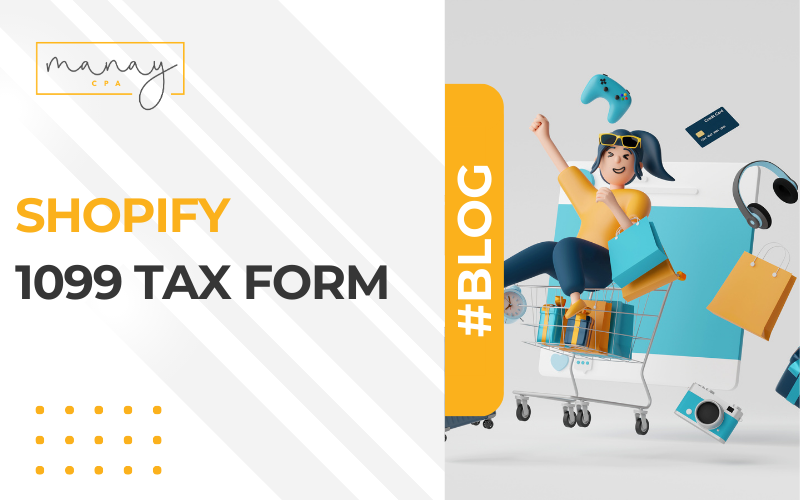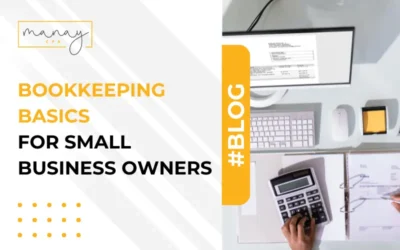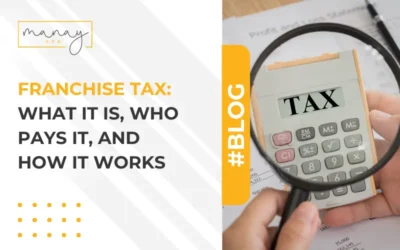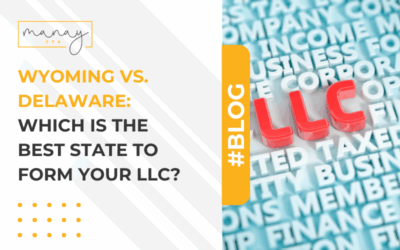Shopify 1099 Tax Form

Shopify is a leading e-commerce platform that enables entrepreneurs to start, grow, and manage a business. It allows individuals and businesses to create online stores and sell products directly on their websites or across multiple sales channels, including social media.
Now, let’s talk taxes – we cannot overstate the importance of understanding your tax obligations as a Shopify store owner. Admittedly, e-commerce taxation can seem complex, but being well-informed can help you ensure that your business is compliant with tax laws.
And one important aspect of these tax obligations is the Shopify 1099 tax form. In the following sections, we’ll discuss what the Shopify 1099 tax form is, why it’s important, and how you can navigate your tax obligations as a Shopify store owner effectively.
Table of Contents
ToggleUnderstanding the Shopify 1099 Tax Form
The Shopify 1099 tax form, provided by Shopify, details a summary of the income you’ve earned through your Shopify store over a tax year.
What are the types of 1099 tax forms for Shopify store owners?
As a Shopify store owner, there are two types of 1099 tax forms you may have to file:
- 1099-K Form: This is issued by payment processors (like Shopify Payments) to report payment card and third-party network transactions.
- 1099-NEC Form: This is used to report non-employee compensation, such as payments to independent contractors.
What is the difference between 1099-K and 1099-NEC?
The key difference between these forms lies in their purpose:
- 1099-K is issued by payment settlement entities, including Shopify, to report payments made in the settlement of reportable payment transactions. It is submitted by Shopify to the IRS if you are using Shopify Payments used to report income received through payment card transactions or through a third-party network like Shopify Payments, that exceed $20,000 in gross payments and more than 200 transactions in the tax year.
- 1099-NEC is used to report income paid to you as an independent contractor or self-employed individual. These are non-employee compensation for services rendered.
If you’re unsure if you’re obligated to file either form, you can always book a free tax consult with a Manay CPA professional.
Who Receives Shopify 1099 Forms?
For the 2023 tax year, you’ll receive a Shopify Form 1099 if your store receives more than $20,000 in gross payments and has completed more than 200 transactions. However, for the tax year 2024, the IRS intends to lower the threshold to $5,000 in gross payments as its strategy to phase into the $600 reporting threshold enacted under the American Rescue Plan (ARP).
Exceptions and Special Cases
Here are the exceptions and special cases for Shopify 1099 forms:
- Business Structure: Corporations, whether S-Corp or C-Corp, generally don’t receive a 1099 form for payments, except when the payment is for legal services.
- Electronic Payments: Some electronic payments are exempted. For instance, payments made using a credit card, debit card, or a payment card issued by a third-party network are not reported on a 1099 form. Instead, these transactions are reported by the card issuer on a 1099-K form.
- Payment Thresholds: For the tax year 2023, you won’t receive a 1099 form unless you receive more than $20,000 in gross payments from over 200 transactions. However, for the tax year 2024, the threshold is set to change to $5,000.
- State-Specific Rules: Some states have lower thresholds for issuing a 1099 form. These include Arkansas, California (which follows the federal threshold, with one exception for app-based drivers), the District of Columbia (DC), Illinois, Maryland, Massachusetts, Missouri, New Jersey, Vermont, and Virginia.
Reporting Income on Shopify
First things first – any income you earn from your Shopify store must be reported to the IRS as self-employment income on your tax return. And that means you’ll file a Schedule C (Form 1040) to report your business income and expenses.
However, any income generated from your Shopify store is reported through the 1099-K form, which is provided by Shopify to store owners whose gross payments exceed $20,000 during the tax year, with over 200 transactions.
Understanding Income Reporting
Although the 1099 form reports your gross income, you’re solely responsible for tracking your deductible business expenses throughout the year. You can then deduct these expenses and other deductibles from your gross income to calculate your net income – the amount for which you’ll be taxed. At the end of the year, simply categorize these expenses based on the categories provided by the IRS on Schedule C (Form 1040).
Finally, when you file your taxes, you’ll report both your gross income from the Shopify 1099 form and the incurred expenses on Form 1040. The IRS uses this form to determine your net profit or loss from your business.
Shopify Store Tax Obligations
As a Shopify store owner, the tax obligations from the income generated from your store is closely tied to the Shopify 1099 form. As mentioned, you’ll only receive the form if you’ve met the $20,000 minimum gross payments and over 200 transactions during the tax year.
So, the tax obligations for Shopify store owners receiving a 1099 form begin with reporting the total gross amount of these transactions in the form. As we’ve emphasized throughout this guide, if you receive a Shopify 1099 form, that means you are required to report this income on your tax return. Note that the income reported on the 1099 form is the gross income, not the net income – you don’t get to deduct any expenses or fees you may have incurred in the operations of your shop during the tax year.
Tax Obligations of 1099 Shopify Form
Your tax obligations will vary depending on your location, the structure of your business, and other factors. Generally, you’re required to report all income earned through your Shopify store, pay taxes on that income, and possibly collect and remit sales tax.
The 1099 form plays a key role in this process. It provides a summary of your gross income, which you’ll need to report on your tax return. You’ll also need to account for any deductible business expenses, which can reduce your taxable income.
What are the deadlines for 1099 Shopify Forms?
The deadline for Shopify to send the 1099 form to you is January 31st of the year following the eligible tax year. In this case, you should receive the 1099 form for the tax year 2023 on or by January 31, 2024.
Guidance on filing as a sole proprietor or business entity
As a Shopify store owner, how you file your taxes entirely depends on the structure of your store. If your Shopify store is set as a sole proprietorship, you’ll have to report your business income and expenses on Schedule C (Form 1040).
Deductible Expenses for Shopify Entrepreneurs
Deductible expenses are costs that you incur in the course of running your Shopify store, and they are subtracted from your gross income, effectively lowering your taxable income. The income reported on your 1099 form is your gross income, which means it doesn’t account for any expenses or fees you may have incurred during the tax year.
By tracking and deducting eligible business expenses, you can reduce the amount of income that’s subject to taxes. So, as a Shopify store owner, you should understand the deductible expenses in your line of work and how you can legally maximize them.
Common Deductible Expenses for Shopify Entrepreneurs
Here are some common expenses that Shopify entrepreneurs can typically deduct:
- Cost of Goods Sold, including the cost of products or raw materials, including freight or shipping charges.
- Home office expenses in case you use part of your home for business
- Advertising and marketing, which includes costs for SEO consulting, social media advertising, and other related business strategies.
- Website expenses, such as the costs to maintain and host your website, including Shopify’s monthly subscription fee.
- Professional services, such as fees paid to lawyers, tax professionals, or consultants.
- Shipping costs in case you offer free shipping to customers.
Other possible deductions could include travel expenses, meals, insurance, or any other costs you incur in the course of conducting activities related to your Shopify store – no matter how small. Note that the list of deductible expenses can be extensive, so you should consider consulting with your Manay CPA tax professional to ensure you’re not missing out on any potential deductions.
Tax Tips for Shopify Store Owners
Your goal is to find the right strategies to handle your taxes effectively and minimize your tax liability. To maximize your deductions legally, always keep accurate and detailed records of all business-related expenses – no matter how small!
Practical Tips for Handling Taxes as a Shopify Store Owner
- Understand Your Tax Obligations: The first step is to familiarize yourself with all the taxes applicable to your business, and that includes understanding the criteria for receiving a 1099 form from Shopify.
- Business Structure: Whether your business is a sole proprietorship, partnership, or corporation, your business classification will impact your tax obligations and potential deductions. Be sure to understand the implications of different business structures.
- Consult a Tax Professional: Tax laws are complex and tend to vary depending on your location and specific situation. A tax professional can provide solutions tailored to your business.
- Stay Updated on Tax Laws: Tax laws are in flux and can change from year to year. Staying updated will help you always remain tax compliant.
Common Shopify 1099 Tax Forms Mistakes to Avoid
It goes without saying that operating a Shopify store isn’t without its own set of challenges. When it comes to the Shopify 1099 tax form, common mistakes involve:
- Not fully understanding your Shopify store tax obligations;
- Not maintaining accurate records;
- Missing the deadline for Shopify 1099 tax forms; and
- Not consulting a tax professional regarding your tax situation.
Conclusion
This guide has covered everything you need to know about Shopify 1099 tax forms, including how you should report income from your Shopify store, deductible expenses, and the conditions for receiving the 1099 form.
Understand your tax obligations as a Shopify store owner, and always stay up to date with the tax regulations that may impact your business. And more importantly, don’t hesitate to consult with a tax professional if you’re unsure about anything. Remember, it’s not just about staying tax compliant – strive to legally optimize your deductions and minimize your tax liability.
Published on: 07 February 2024
Last updated on: 07 February 2024
Manay CPA is a reputable, full-service CPA firm based in Atlanta, Georgia. Founded in 2001, we provide comprehensive accounting and tax solutions to individuals and businesses across all 50 states.





